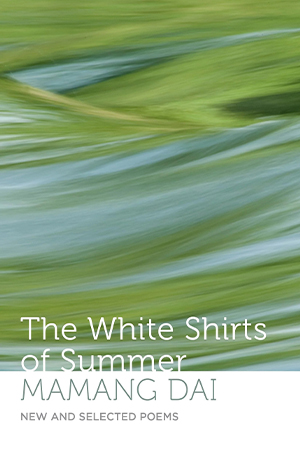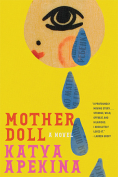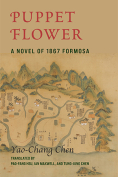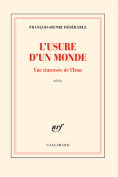The White Shirts of Summer: New and Selected Poems by Mamang Dai
 New Delhi. Speaking Tiger. 2023. 110 pages.
New Delhi. Speaking Tiger. 2023. 110 pages.
Mamang Dai’s The White Shirts of Summer is a tour de force testament to the poet’s remarkable poetic sensibility. Hailing from Arunachal Pradesh, also referred to as the land of the dawn-lit mountains, Dai nimbly educes her readers to the heart of her inland, reflecting on fleeting lives, memories, customs, and myths. Underlying the delicate rhythmic verses are the deeper meanings of life. Dai, with all her dexterity and elegance, knits tales of sorrow, grief, and resilience, reflecting on concomitant issues such as climate change, pandemic, war, and other anthropocentric concerns. More than that, it brings a glimmer of optimism through the transmission of oral traditions that underline the harmonious coexistence of humans and the natural world.
Dai conceived the collection during the Covid-19 pandemic when “the sickle of time cut everything down.” As the poet, like the rest of the world, found herself locked within the confines of concrete walls, “fighting against” a deadly virus, she started “questioning” human actions, especially “those things about greed and dominance.” Her poems scrupulously capture the ephemeral state of life in an apocalyptic-like dome: “Oh oh oh, it was hot. He pondered the Amazon fires. The news made out as if the planet was on fire . . . / Soon we’ll have an invasion of insects, the way our forests are dying, and everything / running to find a place somewhere” (“Locked Down, August 2019”).
Through her poetry, Dai explores with all earnestness what constitutes the temporal. White Shirts is not merely a reflection on the passing of time but an exploration of its fluidity. Dai deftly navigates between past, present, and future, blurring the lines between memory and anticipation. Infusing her poetry with the rich tapestry of Arunachal folklore, she introduces her readers to “shamans, prayers, spirits” and “the truth about land.” From the rhythms of tribal dances to the scent of pine forests and also tales of loss and longing, each poem resonates with the pulse of the land and its people. Through their stories, Dai explores universal themes of love, longing, and resilience.
Amidst doleful tales of ecological crises and the depleting natural world, Dai explores hope and love. In “Second Wave,” she anticipates the arrival of spring “touching limbs and eyes,” and in “The Sorrow of Women,” she listens to the jejune yet candid cries of a wife whose husband is fighting a war: “My love, what shall I do?/ I am thinking how I may lose you / To war, and bigger issues / More important than me.” In terms of style, Dai’s poetry is characterized by its lyrical simplicity. Her language is spare yet evocative, each word chosen with care to convey the depth of emotion contained within. Her verse has a musical quality, a cadence that lingers in the mind long after the last page has been turned.
As if reflecting the balmy shades of green on the book’s jacket, the greenness of forests and memory are spread across the book. Dai’s poems are like windows through which we glimpse fleeting moments frozen in the amber of poetic expression.
Rifat Ara Khatun & H S Komalesha
Indian Institute of Technology Kharagpur













![The cover to [...] by Fady Joudah](/sites/worldliteraturetoday.org/files/styles/backissue_small/public/Joudah.jpg?itok=HZO1_68A)













